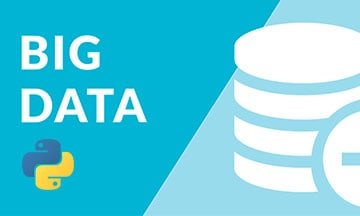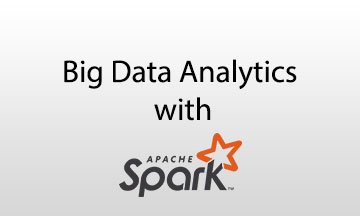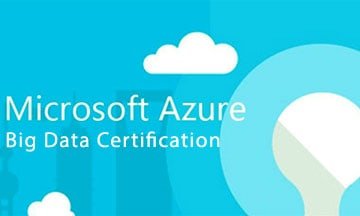Big Data Analytics with Python Training Course
| Date | Venue | Duration | Fees | |
|---|---|---|---|---|
| 13 May - 17 May, 2024 | Athens | 5 Days | $5125 | Register |
| 20 May - 24 May, 2024 | Dubai | 5 Days | $4250 | Register |
| 24 Jun - 28 Jun, 2024 | Dubai | 5 Days | $4250 | Register |
| 22 Jul - 26 Jul, 2024 | Dubai | 5 Days | $4250 | Register |
| 05 Aug - 23 Aug, 2024 | Dar Es Salam | 15 Days | $13500 | Register |
| 26 Aug - 30 Aug, 2024 | Dubai | 5 Days | $4250 | Register |
| 02 Sep - 06 Sep, 2024 | Dubai | 5 Days | $4250 | Register |
| 14 Oct - 18 Oct, 2024 | Dubai | 5 Days | $4250 | Register |
| 04 Nov - 22 Nov, 2024 | Kigali | 15 Days | $13500 | Register |
| 25 Nov - 29 Nov, 2024 | Dubai | 5 Days | $4250 | Register |
| 16 Dec - 20 Dec, 2024 | Dubai | 5 Days | $4250 | Register |
Course Overview
Python has been one of the most adaptable, and robust open-source languages that are easy to learn and uses powerful libraries for data manipulation and analysis. For many years now, Python has been used in scientific computing and mathematical domains such as physics, finance, oil and gas, and signal processing.
This Big Data Analytics with Python course provides a complete overview of data analysis techniques using Python. A Data Scientist is one of the strongest professions today and Python is a crucial skill for such roles.
The Big Data Analytics with Python course teaches you to master the concepts of Python programming. Through this training, you will gain knowledge of the essential tools of Data Analytics with Python.
What skills will be taught in this ‘Big Data Analytics with Python Training Course’? Participants will learn concepts and techniques like web scraping, hypothesis building, data wrangling, data exploration, data visualisation, mathematical computing, Python programming concepts, NumPy and SciPy, and Scikit-Learn for Natural Language Processing.
This Zoe training course will empower you with the practical experience required to perform predictive modelling that would require Machine Learning using Python.
Course Objectives
Upon completing this big data analytics with python training course successfully, participants will be able to:
- Programmatically download and analyse data
- Practise techniques to manage various types of data – ordinal, categorical, encoding
- Learn data visualisation
- Master the art of performing step-by-step data analysis
- Gain information on the roles of a Machine Learning Engineer
- Describe Machine Learning
- Work with real-time data
- Learn tools and techniques for predictive modelling
- Discuss Machine Learning algorithms and their implementation
- Validate Machine Learning algorithms
- Explain Time Series and its related concepts
- Perform Text Mining and Sentimental analysis
Training Methodology
This is an interactive big data analytics with python training program and will consist of the following training approaches:
- Lectures
- Seminars & Presentations
- Group Discussions
- Assignments
- Case Studies & Functional Exercises
Similar to all our courses, this program also follows the ‘Do-Review-Learn-Apply’ model.
Organisational Benefits
Companies who send in their employees to participate in this big data analytics with python training course can benefit in the following ways:
- Save on operational costs as Python is free to use because of its OSI-approved open source license
- Give your employees knowledge in data analysis, Machine Learning, data visualisation, web scraping, and Natural Language Processing, which will, in turn, allow them to apply these concepts to improve the functions in your organisation
- Provide your workforce with flexible and cost-effective professional development opportunities
- Analyse case studies in this domain and be able to apply successful techniques in your organisation
- Comprehend the principles and practice of Big Data Analytics and the context in which this operates
Personal Benefits
Professionals who participate in this big data analytics with python training course can benefit in the following ways:
- Build and use Machine learning applications and other scientific computations
- Cut development time in half with Python’s simple to read syntax and easy compilation feature
- Learn to debug programs with Python’s built-in debugger
- Learn to run Python on Windows, Linux/Unix, and Mac OS, and Java and .NET virtual machines
- Understand why Python is considered one of the most preferred languages for Data Analytics
Who Should Attend?
This big data analytics with python training course would be suitable for:
- Analytics Team Managers
- Business Analysts who want to comprehend Machine Learning concepts
- Information Architects who want to gain proficiency in Predictive Analytics
- Programmers, Developers, Technical Leads, Architects
- Individuals aspiring to be Machine Learning Engineers
- Professionals who want to develop automatic predictive models using data
Course Outline
MODULE 1: DATA SCIENCE OVERVIEW
- Introduction to Data Science
- Different Sectors Using Data Science
- Purpose and Components of Python
MODULE 2: DATA ANALYTICS OVERVIEW
- Data Analytics Process
- Knowledge Check
- Exploratory Data Analysis (EDA)
- EDA-Quantitative Technique
- EDA – Graphical Technique
- Data Analytics Conclusion or Predictions
- Data Analytics Communication
- Data Types for Plotting
- Data Types and Plotting
MODULE 3: STATISTICAL ANALYSIS AND BUSINESS APPLICATIONS
- Introduction to Statistics
- Statistical and Non-statistical Analysis
- Major Categories of Statistics
- Statistical Analysis Considerations
- Population and Sample
- Statistical Analysis Process
- Data Distribution
- Dispersion
- Histogram
- Correlation and Inferential Statistics
MODULE 4 PYTHON ENVIRONMENT SETUP AND ESSENTIALS
- Anaconda
- Installation of Anaconda Python Distribution
- Data Types with Python
- Basic Operators and Functions
MODULE 5: MATHEMATICAL COMPUTING WITH PYTHON (NUMPY)
- Introduction to NumPy
- Activity-Sequence it Right
- Creating and Printing an nd array
- Class and Attributes of nd array
- Basic Operations
- Copy and Views
- Mathematical Functions of NumPy
- Evaluate the datasets containing GDPs of different countries
- Evaluate the datasets of Summer Olympics 2012
MODULE 6: SCIENTIFIC COMPUTING WITH PYTHON (SCIPY)
- Introduction to SciPy
- SciPy Sub Package – Integration and Optimisation
- SciPy Sub package
- Demo – Calculate Eigenvalues and Eigenvector
- Use SciPy to solve a linear algebra problem
- Use SciPy to define 20 random variables for random values
MODULE 7: DATA MANIPULATION WITH PANDAS
- Introduction to Pandas
- Understanding DataFrame
- View and Select Data Demo
- Missing Values
- Data Operations
- File Read and Write Support
- Pandas SQL Operation
- Analyse the Federal Aviation Authority (FAA) dataset using Pandas
- Analyse the dataset in CSV format given for fire department
MODULE 8: MACHINE LEARNING WITH SCIKIT–LEARN
- Machine Learning Approach
- Understand data sets and extract its features
- Identifying problem type and learning model
- How it Works
- Train, test and optimising the model
- Supervised Learning Model Considerations
- Scikit-Learn
- Supervised Learning Models – Linear Regression
- Supervised Learning Models – Logistic Regression
- Unsupervised Learning Models
- Pipeline
- Model Persistence and Evaluation
- Analyse a dataset to find the features and response label of it
MODULE 9: NATURAL LANGUAGE PROCESSING WITH SCIKIT LEARN
- NLP Overview
- NLP Applications
- NLP Libraries-Scikit
- Extraction Considerations
- Scikit Learn-Model Training and Grid Search
- Analyse a given spam collection dataset
- Analyse the sentiment dataset using NLP
MODULE 10: DATA VISUALISATION IN PYTHON USING MATPLOT-LIB
- Introduction to Data Visualisation
- Line Properties
- (x, y) Plot and Subplots
- Types of Plots
- Analyse the “auto mpg data” and draw a pair plot
- Draw a pie chart to visualise a dataset
MODULE 11: WEB SCRAPING WITH BEAUTIFUL SOUP
- Web Scraping and Parsing
- Knowledge Check
- Understanding and Searching the Tree
- Navigating options
- Demo3 Navigating a Tree
- Knowledge Check
- Modifying the Tree
- Parsing and Printing the Document
- Scrape the Simplilearn website page to perform some tasks
- Scrape the Simplilearn website page to perform some tasks
MODULE 12: INTEGRATION WITH HADOOP MAP-REDUCE AND SPARK
- Why Big Data Solutions are Provided for Python0
- Big Data and Hadoop
- Hadoop Core Components
- Python Integration with HDFS using Hadoop Streaming
- Using Hadoop Streaming for Calculating Word Count
- Python Integration with Spark using PySpark
- Using PySpark to Determine Word Count
- Determine the word count for Amazon dataset











